Kabini dam |
Kabini River:
|
Maasai
|
Maasai:
|
Traditional Knowledge for Sustainable Livelihoods |
Traditional Knowledge for Sustainable Livelihoods:
ISTIC-UNESCO
|
Global Water Tech Summit – 2024 |
Global WaterTech Award:
|
Ideas4LiFE portal |
Ideas4LiFE portal
|
Tarang Shakti |
Tarang Shakti
|
India and China conducted the 30th meeting of the Working Mechanism for Consultation and Coordination on India-China Border Affairs (WMCC) in New Delhi.
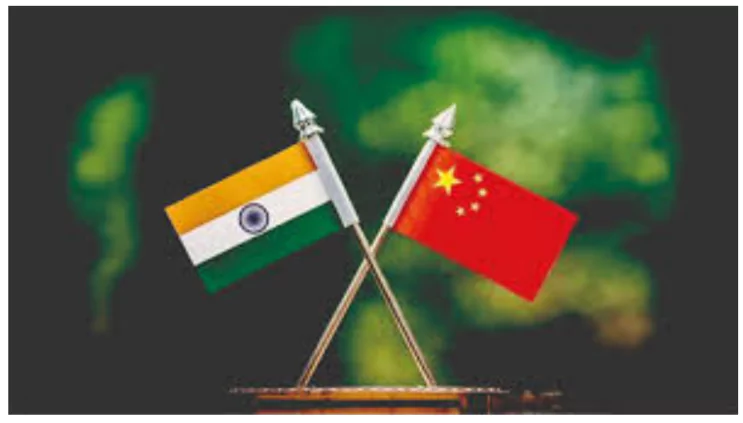
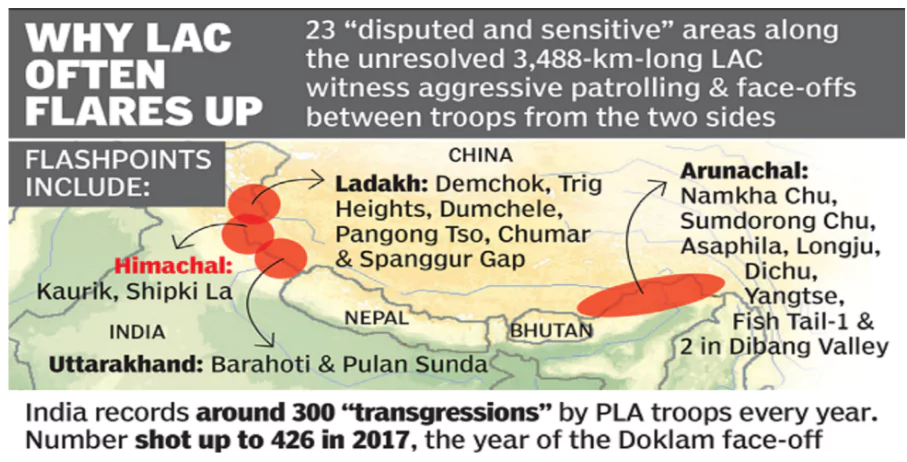
Wayanad, Kerala (which was struck by a deadly landslide event taking almost 200 lives) was ranked 13th on Indian Space Research Organisation (ISRO) ‘Landslide Atlas of India’ prepared in 2023 based on exposure to landslides in terms of key socio-economic parameters. The Landslide Atlas of India created by ISRO, identifies 147 high-risk districts across 17 states & 2 UTs. Northwest Himalayas (66.5%), Northeast Himalayas (18.8%), and Western Ghats (14.7%) are most prone.
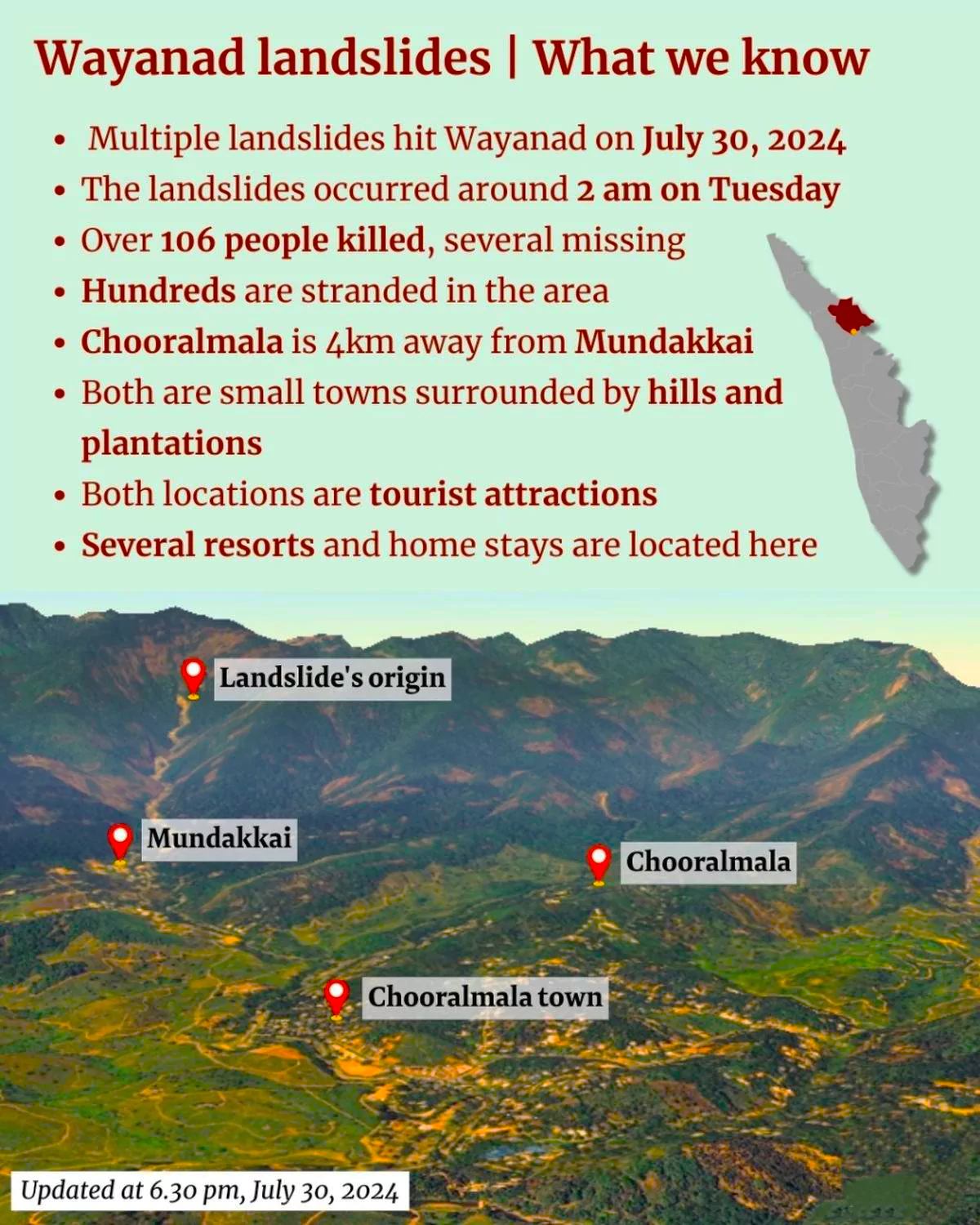
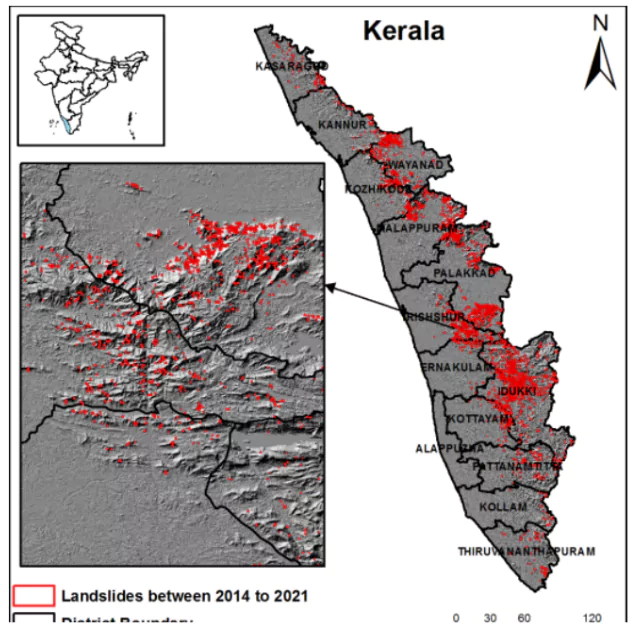
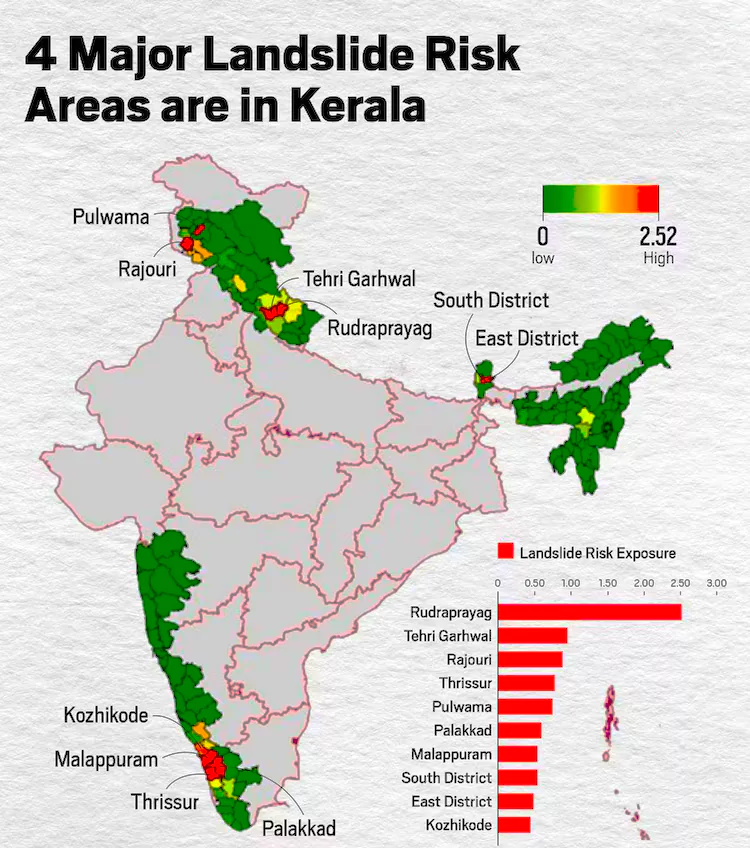 Landslide Inventories: The database mainly contains three types of inventory ie. seasonal, event-brd and route-wise landslide inventories for the 1998-2022 period showing the hotspot areas.
Landslide Inventories: The database mainly contains three types of inventory ie. seasonal, event-brd and route-wise landslide inventories for the 1998-2022 period showing the hotspot areas.
Landslides
|
The Supreme Court has refused to reconsider its April 2020 verdict quashing the government’s proposal to enable 100 per cent reservation to local Scheduled Tribes (STs) for teachers’ posts in the Scheduled Area of united Andhra Pradesh.
The Fifth Schedule of the Indian Constitution
|
|---|
Recently, More than 50 people were killed after landslides swept through tea estates and homes in Kerala
India is among the top five landslide-prone countries globally, where at least one death per 100 sq km is reported in a year due to a landslide event.
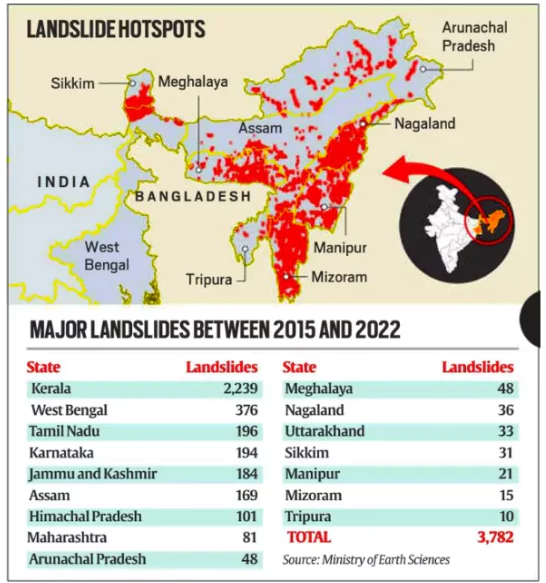
1. Greenhouse Gas Emissions:
Glacial Lake outburst Floods
Heatwave
|
|---|
2. Deforestation and Land Use Changes:
3. Urbanization:
Floods
|
|---|
4. Industrial and Agricultural Pollution:
5. Unsustainable Water Management
India’s major mineral imports – mostly non-critical rose 80% over five years to ₹68,633 crore in FY24.
These major minerals include copper ore concentrates, phosphorite, manganese ore, limestone, iron ore, bauxite, asbestos, sulphur, magnesite, and fluorspar, among others. These ten minerals account for 97% of the import of mineral minerals
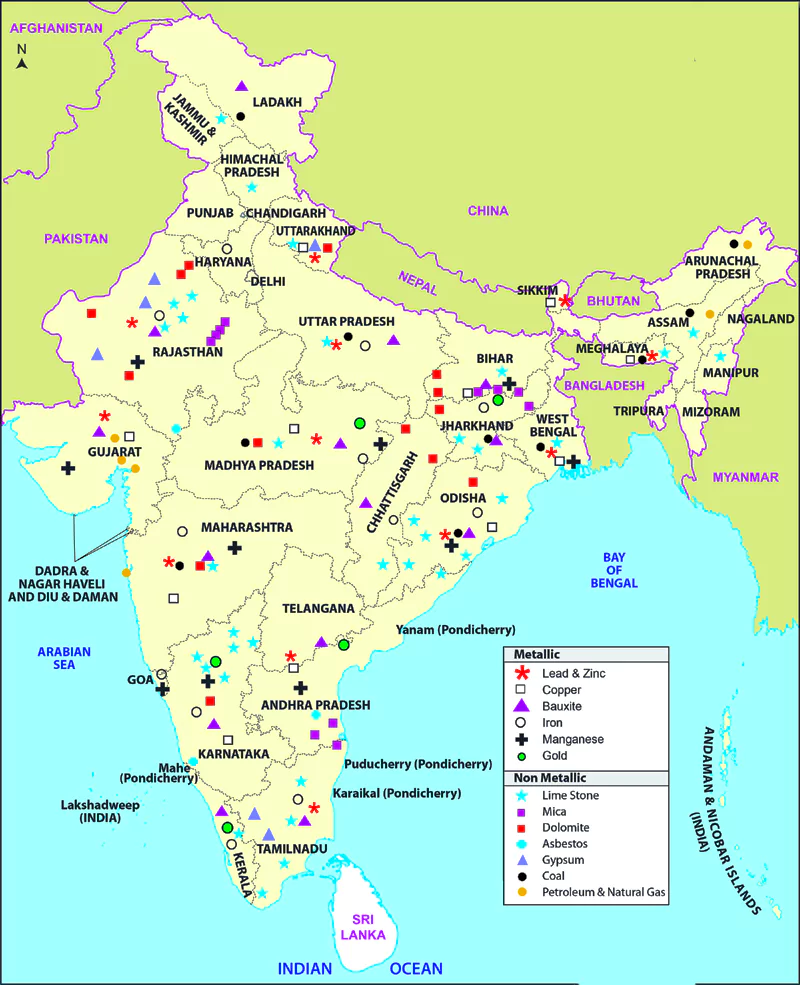
About Classification of MineralsA mineral is a natural substance with distinctive chemical and physical properties, composition, and atomic structure.
About Critical MineralsCritical minerals are the minerals essential for economic growth and national security. If these minerals aren’t available or are concentrated in a few places, it can create vulnerabilities in supply chains.
|
|---|
Researchers at The CSIR-Institute of Genomics and Integrative Biology, New Delhi and the L. V Prasad eye institute have engineered new versions of an enzyme that can make CRISPR based technology more precise.
About Genes
|
Clustered Regularly Interspaced Short Palindromic Repeats (CRISPR Cas9)
|
After two years of political negotiations, 194 World Health Organization (WHO) member states failed to finalise a historic Pandemic Agreement
International Health Regulations (2005) (IHR)
|
|---|
India’s Pandemic Management SystemIt encompasses a range of strategies and frameworks designed to prepare for, respond to, and mitigate the effects of pandemics. This system involves multi-level coordination among various government agencies, healthcare institutions, and international organizations. Policy Framework
Institutional Mechanisms
Surveillance and Data Management
Public Health Interventions
|
|---|
Under the theme “All for Health, Health for All,” discussions were centered around the World Health Organization (WHO) new strategy for global health 2025-2028.
Few Notable Changes proposed are:
Pandemic EmergencyEach and all of the six following criteria must be met for an “event”) to be determined a “Pandemic Emergency”.
|
|---|
Intergovernmental Negotiating Body (INB)
|
|---|
Three key contentious issues in the latest draft of the Pandemic Agreement remain significant obstacles to its adoption:
What is TRIPS?
Relaxation Favoring TRIPS
|
|---|
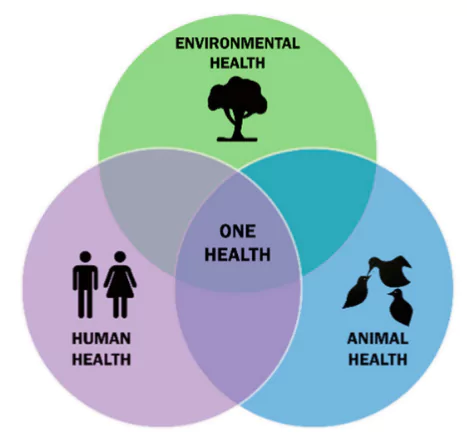 One Health: It is an integrated, unifying approach that aims to sustainably balance and optimize the health of people, animals and ecosystems.
One Health: It is an integrated, unifying approach that aims to sustainably balance and optimize the health of people, animals and ecosystems.
Maharashtra Withdraws GRs on Hindi as Third Langua...
Statistical Report on Value of Output from Agricul...
Skills for the Future: Transforming India’s Work...
National Turmeric Board HQ Inaugurated in Nizamaba...
ECI Moves to De-List 345 Inactive Registered Unrec...
MNRE Issues Revised Biomass Guidelines Under Natio...
<div class="new-fform">
</div>